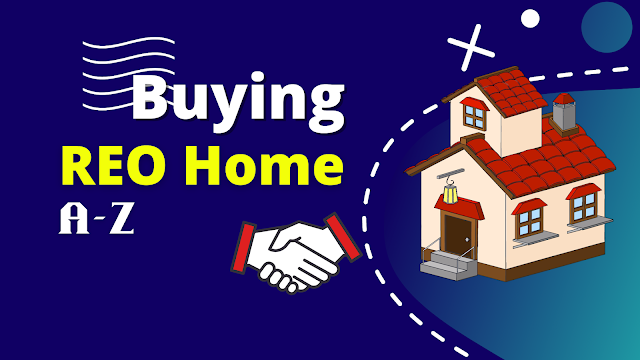What is REO Property?
REO stands for "Real Estate Owned," and it refers to foreclosed homes whose ownership has been transferred to the bank or lender.
There are various ways for this to happen, but once a lender takes ownership of a home, it does not instantly become an REO. A lender will first try to sell the home at auction in order to recuperate losses and get rid of the property quickly.
However, homes rarely sell at auction, which is unfortunate for the lender or investor. There are several reasons for this, the most important of which is that many homeowners end up in foreclosure because they owe more on their home than it is worth, frequently due to a market slump.
If the lender who took possession of the home is unable to sell it at auction, the lender takes control of the property. To limit its losses, the lender then tries to sell the real estate-held property. It then becomes an REO property, which usually sits on the lender's books for a long time.
How Does A Home Get REO Status?
To become a REO property, it must first go through the following steps:
Default on a loan
The homeowner/borrower defaults on (misses) their mortgage payments for a specific amount of time, which is normally specified in the mortgage terms.
Foreclosure
To foreclose on the property, the lender files legal action against the borrower.
Auction
After that, the property is auctioned off to the public and usually sold to the highest bidder. The bank or lender recoups a portion of the cost of the outstanding loan principal, interest, and fees from the sale of the property if it sells to a third party at auction.
REO Status
If the house does not sell at auction to a third party, the lender usually takes control and the house becomes a Real Estate Owned (REO) property. The lender prepares to sell the property, which may include evicting inhabitants and clearing any outstanding liens.
Advantages of Buying REO Home
- Buying REO properties can be a terrific deal if done correctly. That is, if everything goes according to plan. The amount of repair work necessary and the bank's asking price will determine the quality of an REO sale. The good news is that, unlike at a foreclosure auction, investors can ask for a house inspection before signing a deal.
- The bulk of REO homes are sold to investors with no outstanding claims or title liens. Delinquent taxes and HOA liens are usually removed, allowing would-be investors to save a lot of money.
- The third and most advantageous advantage of purchasing REO houses is that there is no homeowner to bargain with. Because investors will not be negotiating with a seller who has personal attachments to the property, but rather with a bank looking to recuperate its losses, this will assist save time during the negotiation stage.
A Couple Of Drawbacks
- Although an REO property's low price point may appeal to house purchasers, these homes frequently require renovations. The lender will normally refuse to pay for repairs since they do not want to spend any more money on the property than they already have.
- Aside from any regular repairs or enhancements that may be required, there may be additional pricey difficulties. It's possible, for example, that the property is subject to a lien. To avoid this problem, you can purchase title insurance, but this is an additional cost that can eat into your budget.
How to Buy an REO Home?
The process of purchasing a REO home is similar to that of purchasing a regular home, but there are a few major differences to be aware of. These steps should help you succeed with bank-owned houses, whether you're buying for yourself or as an investment.
Find REO Home
Find A Lender
Getting pre-qualified by the home's owner's lender can also help speed up the process. They'll be aware that you're financially capable. As a result, they're more inclined to take you up on your offer.
Find A Buyer’s Agent
They will be able to assist you throughout the entire home-buying process. They can also inform you of any further needs, such as hiring an attorney or a property inspection. If you are specifically interested in REO properties, try to find a buyer’s agent who works with REO properties frequently.






